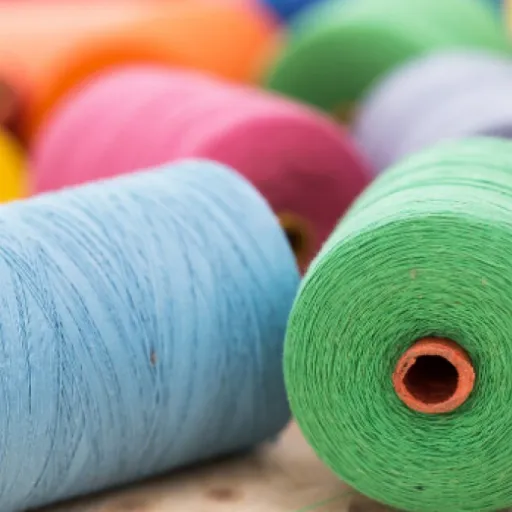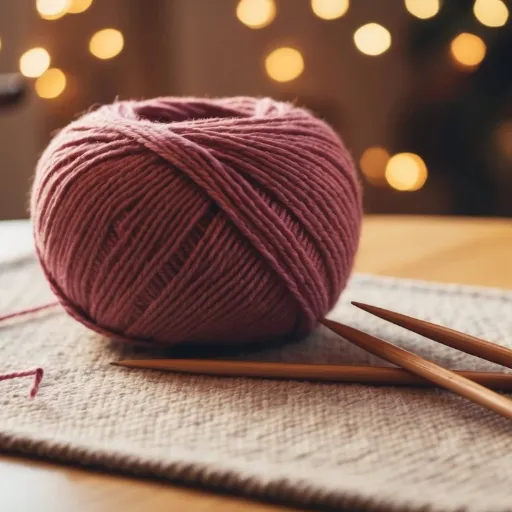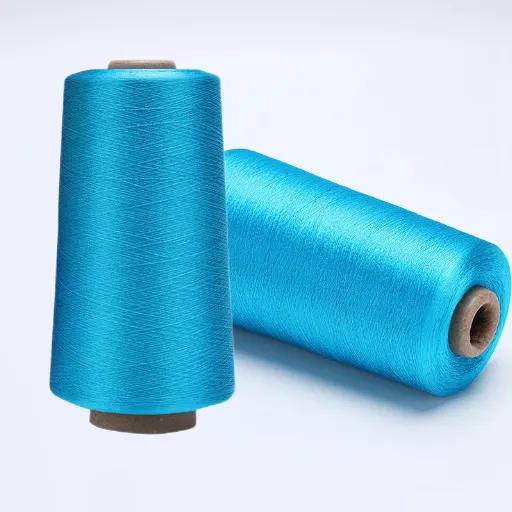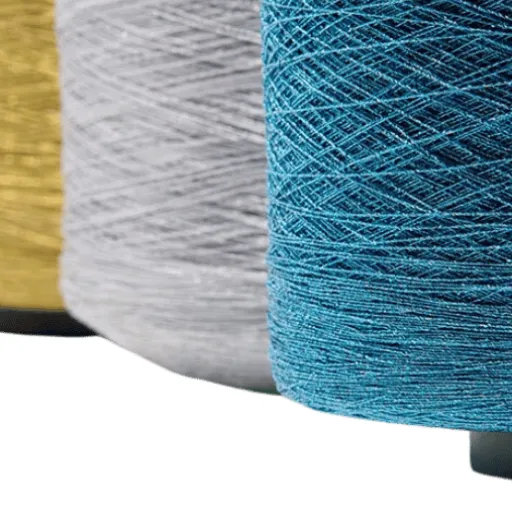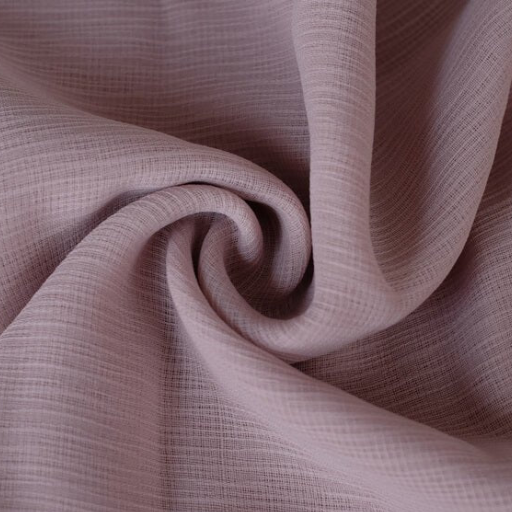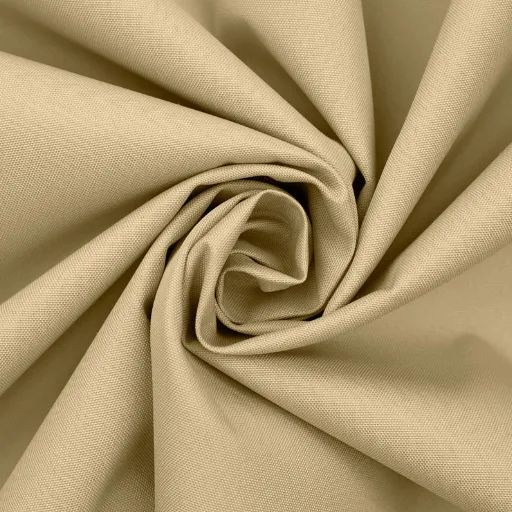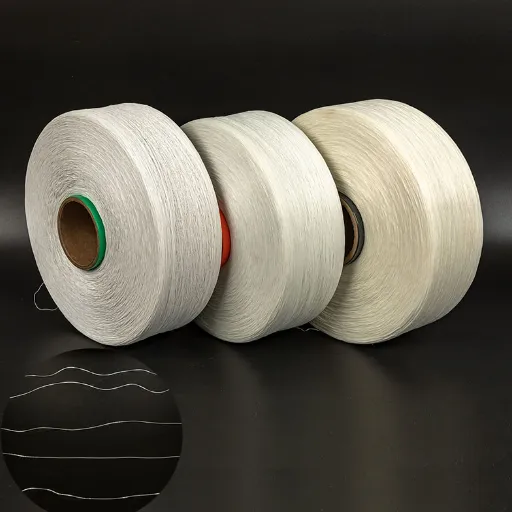Are you looking for the ideal acrylic yarn or thread to make your artistic projects come alive? Whether you’re a dedicated knitter, crocheter, or DIY craftsman, the right material is the main factor in realizing your vision. Acrylic yarn and thread are beloved in the crafting community for their versatility, affordability, and wide range of colors and textures available. This comprehensive guide will lead you through the world of acrylic yarns and threads, helping you understand their differences, applications, and how to make the most informed choice for your next masterpiece with confidence.
Understanding Acrylic Yarn and Thread
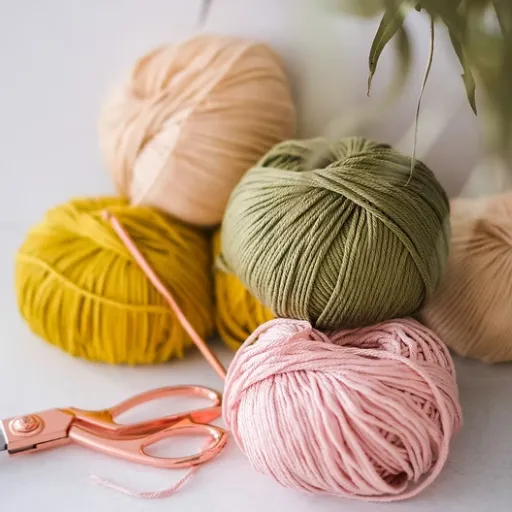
What is Acrylic Yarn?
Acrylic yarn is a synthetic fiber formed from polymer compounds, particularly polyacrylonitrile, which is a byproduct of oil or gas refining. Its purpose is to replicate the feel and appearance of natural fibers like wool while providing superior wear resistance and cost-effectiveness. As a result of its multifaceted properties, acrylic yarn has gained immense popularity among crafters who work with various techniques, including knitting and crocheting.
✨ Distinguished Traits of Acrylic Yarn:
- Soft & Lightweight: Easy and pleasant to work with, providing comfortable handling throughout your project
- Exceptional Durability: Handles regular use without showing signs of wear and tear
- Pest Resistant: Not affected by moths and mildew, extending its lifespan significantly
- Vibrant Color Retention: Holds dye exceptionally well, keeping projects colorful and fade-proof
- Easy Maintenance: Machine washable and quick-drying compared to natural fibers
While pure wool offers superior insulating properties, acrylic provides moderate warmth and is frequently blended with other fibers to achieve specific characteristics. All these factors combined make acrylic yarn a wonderful solution for both novice and experienced crafters, suitable for a diverse variety of creative projects.
Properties of Acrylic Fiber
Acrylic fiber is highly appreciated among textile materials due to its durable and low-maintenance characteristics. It serves as an excellent substitute for natural fibers, especially wool, because of its lightness, softness, and warmth. Its ability to imitate natural fibers’ durability and comfort while remaining machine washable and quick-drying has made it increasingly popular for diverse applications.
| Property | Description | Benefit |
|---|---|---|
| Fade Resistance | Resistant to fading in direct sunlight | Ideal for outdoor upholstery and garments |
| Pest Immunity | Not damaged by moths or mildew | Long-lasting home textiles and clothing |
| Blendability | Can be mixed with other materials | Enhanced toughness, stretch, or fineness |
| Affordability | Cost-effective production | Budget-friendly for all skill levels |
Moreover, the fiber can be blended with other materials to improve certain qualities such as toughness, stretchiness, or fineness. The resulting combinations are more versatile than single fibers, making acrylic suitable for applications ranging from clothing and accessories to upholstering and art projects. Its affordability, reliability, and functionality make it a preferred choice for creative and practical solutions alike.
Comparison with Cotton Yarn
When acrylic fiber and cotton yarn are compared, several noteworthy distinctions emerge in their properties, uses, and care requirements. Acrylic fiber, being synthetic, is lightweight, strong, and impervious to water and pests. Cotton, conversely, is a natural fiber that is breathable, soft, and more skin-friendly, but it can shrink and develop mold, requiring more careful maintenance.
⚖️ Acrylic vs. Cotton: Key Considerations
| Factor | Acrylic | Cotton |
|---|---|---|
| Cost | More affordable | Moderately priced |
| Best For | Winter clothing, household textiles, crafts | Lightweight garments, bedding |
| Sustainability | Petroleum-based, less eco-friendly | Biodegradable, renewable resource |
| Care | Easy, machine washable | Requires more care, can shrink |
Furthermore, cotton is often regarded as the better option for sustainability. It is biodegradable and made from renewable resources, while acrylic is petroleum-based. However, cotton cultivation can be resource-intensive, requiring substantial amounts of water and pesticides. Careful weighing of these factors allows crafters to make choices that align with their priorities and values.
Benefits of Using Acrylic Yarn

Durability and Longevity
Acrylic yarn is in great demand because of its long-lasting nature and capacity to endure wear and tear over time. Natural fibers cannot match acrylic’s resilience, which is why it’s used for making blankets, sweaters, and other household items or wearables that undergo frequent use and washing.
Furthermore, acrylic yarn is less likely to shrink or stretch than natural fibers, even after repeated washing. Its ability to retain its original form contributes significantly to the project’s lifespan. This durability makes it an excellent fit for products requiring regular washing or daily use, providing reliable performance throughout their lifetime.
🛡️ Longevity Advantages:
- Shape Retention: Maintains original form after multiple washes
- Colorfast Properties: Doesn’t lose brightness or vibrancy when exposed to sun or cleaning substances
- Visual Appeal: Items remain attractive for extended periods
- Strength & Consistency: Provides uniform performance across numerous applications
Machine Washability
One of the main reasons acrylic yarn is so appreciated is its machine washability, which significantly expands its practical applications. Items made from acrylic yarn can withstand regular machine washing without major loss of quality or durability. This easy-care characteristic ensures the yarn maintains its original appearance over extended periods.
When washing acrylic yarn items, the best approach is using a gentle cycle with cold or warm water to preserve fabric condition. A mild detergent is recommended as it’s not too harsh on the fibers. Additionally, acrylic yarn dries quickly, meaning items can simply be hung or laid flat to dry without special care or extensive time investment.
✅ Care Instructions Checklist:
- Use gentle cycle with cold or warm water
- Select mild detergent for optimal fabric care
- Avoid high heat during washing to prevent shrinking or warping
- Air dry by hanging or laying flat
- Follow garment-specific care instructions when provided
- Skip high-heat drying to maintain material integrity
💡 Pro Tip: While the yarn is durable, always follow care instructions specific to your garment or application. By adhering to these simple guidelines, items made of acrylic yarn will remain vibrant, strong, and low-maintenance over time.
Affordability and Accessibility
The affordability of acrylic yarn is one of its most remarkable characteristics. Its price is substantially lower than natural fibers such as wool or cotton, making it a cost-effective selection for both hobbyists and manufacturers. However, this lower cost doesn’t limit its versatility—it can be used for a vast range of projects, including apparel and home décor. This cost-effectiveness enables people of all financial situations to enjoy crafting and creating with high-quality materials.
Acrylic yarn is also advantageous due to its enormous accessibility. Different types of acrylic yarn in terms of colors, textures, and weights can be found at craft stores, online marketplaces, and local shops. This widespread availability ensures that both new and experienced crafters can easily obtain the exact material needed for their projects. Wherever you are, there’s a good chance you’ll find numerous acrylic yarn options available.
🌟 Value Proposition:
- Universal Adaptability: Suitable for diverse project types and techniques
- Natural Fiber Mimicry: Replicates feel and appearance of premium materials
- Global Availability: Widely distributed through modern production technologies
- Beginner-Friendly: Low price point encourages experimentation and skill development
Types of Acrylic Yarn
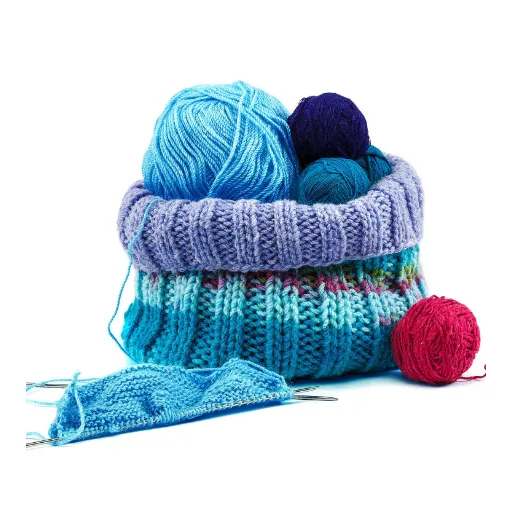
Super Bulky vs. Chunky Yarn
Super bulky yarn and chunky yarn both share thickness as a common factor, yet their distinct characteristics lead them to different project applications. Super bulky yarn is larger than chunky yarn in thickness and provides more pronounced texture. The Standard Yarn Weight system classifies it as size 6, while chunky yarn typically receives a size 5 designation. Super bulky yarn results in denser, warmer projects completed faster than time-consuming or heavy knit types like blankets and oversized scarves.
| Characteristic | Super Bulky (Size 6) | Chunky (Size 5) |
|---|---|---|
| Thickness | Largest, most pronounced texture | Thick, but slightly less voluminous |
| Project Speed | Very fast completion | Fast, but more time than super bulky |
| Best Projects | Blankets, oversized scarves | Sweaters, hats, textured garments |
| Pattern Detail | Limited intricate patterns | More detailed stitch patterns possible |
| Ideal For | Beginners, quick finishers | Balance of thickness and flexibility |
Super bulky yarn excels in projects demanding maximum warmth and super-fast completion, while chunky yarn suits designs requiring thickness with more intricate stitching versatility. Both have their places in the knitting-crochet world, and recognizing their individual features helps artists make the right choices to realize their creative visions.
Different Textures: Chenille, Velvet, and Others
Chenille and velvet yarns are among the most sought-after options for creating soft, luxurious textures. Chenille features a velvety surface and slightly fuzzy appearance, making it perfect for blankets, scarves, and home décor pieces where softness and warmth are priorities. Its unique construction gives a plush yet light feel, though it may require careful handling to prevent snagging during crafting.
Velvet yarn, as the name suggests, has a rich and smooth surface with an elegant sheen that’s easily visible in finished projects. This yarn type suits clothing and accessories like hats or shawls, as well as decorative pieces. Velvet yarns often have less stretch, resulting in firm, lasting textures, though they can sometimes be challenging for novices to handle.
🎨 Texture Variety Guide:
- Chenille: Velvety, plush surface ideal for blankets and scarves—requires careful handling
- Velvet: Rich, smooth texture with elegant sheen—perfect for accessories and decorative items
- Boucle: Looped, textured appearance adding dimensional interest to projects
- Roving: Thick, unspun fiber creating soft, bulky textures
- Tape: Flat, ribbon-like yarn producing unique visual effects
Besides chenille and velvet, various textured yarns like boucle, roving, and tape contribute to craft diversity. These different textures provide varying levels of difficulty and visual appeal, allowing artists to experiment with imagination in patterns and stitches. Understanding the properties of these yarns is key to achieving finished works that align with your artistic vision.
Popular Acrylic Yarn Brands
Acrylic yarn is among the most popular yarn types due to its affordability and versatility for all kinds of projects, making it essential for crafters from beginners to the most skillful. Well-known brands offer high-quality 100% acrylic yarns with comprehensive ranges of colors and textures to meet diverse project needs and weights. These yarns are easy to handle, machine washable, and durable, making them ideal materials for clothing, decorative items, and crafts.
When selecting an acrylic yarn brand, consider factors like strength, softness, and colorfastness. Some brands offer incredibly soft yarns similar to natural fibers in touch, while others provide diverse sources and vibrant colors to capture attention. Always check labels for recommended needle and hook sizes to prevent difficulties and ensure consistent results.
🏆 Brand Selection Tips:
| Consideration | What to Look For |
|---|---|
| Softness | Brands like Caron Simply Soft offer natural fiber-like feel |
| Durability | Red Heart Super Saver known for long-lasting projects |
| Color Range | Wide variety for creative flexibility |
| Customer Reviews | Check feedback from other crafters for reliability insights |
Reading customer reviews and listening to other crafters’ recommendations helps identify the most reliable brands on the market. Whether you prioritize price, texture, or specific project demands, you’ll find suitable options. The combination of acrylic yarn’s affordability and variety has transformed it into a preferred material for unlimited creative activities.
Getting Started with Acrylic Yarn

Essential Tools: Crochet Hooks and Needles
Selecting appropriate crochet hooks and knitting needles is crucial when working with acrylic yarn to achieve perfect results. Tool size depends on both yarn weight and desired texture for your project. When working with lightweight or fine acrylic yarn, smaller hooks and needles (2.25 mm to 3.5 mm) work well for delicate, intricate designs. Conversely, thick or bulky acrylic yarn typically pairs with larger tools ranging from 6.5 mm to 12 mm, resulting in softer, more structured appearances.
| Material | Advantages | Best For |
|---|---|---|
| Aluminum | Lightweight, durable, fast stitching | Speed and efficiency |
| Wood/Bamboo | Better grip, slightly rough surface, stitch control | Preventing stitch slippage |
| Acrylic/Plastic | Most affordable, smooth glide through fibers | Budget-conscious crafters, acrylic yarn |
💡 Expert Advice: Always refer to yarn labels for hook or needle size recommendations, as manufacturers provide guidance based on the material. Consider your project’s intended results—tight stitches for amigurumi or accessories, loose stitches for blankets and scarves.
Beginner’s Guide to Crochet and Knitting
Both crocheting and knitting are popular handicrafts allowing absolute beginners to create a range of items using straightforward tools and techniques. Initially, you’ll need a crochet hook or pair of knitting needles, plus yarn. For starters, medium-thickness, smooth yarn is advisable as it’s more manageable and you’ll better notice your stitches. Crochet hooks and knitting needles vary in size, and your choice should align with yarn thickness. Yarn labels usually indicate suitable hook and needle sizes, so ensure your tools are compatible.
📚 Foundational Skills:
For Crochet:
- Master the chain stitch—backbone of most projects
- Learn the single crochet stitch to form first rows
- Practice even tension and consistent loop creation
For Knitting:
- Start with casting on stitches to prepare your project
- Practice the knit stitch and purl stitch
- Develop even tension throughout your work
For your first project, select simple patterns like scarves or washcloths. These beginner-friendly projects let you focus on skill improvement without feeling overwhelmed. Remember that mistakes are necessary parts of the learning process. If you make an error, practice un-stitching rows—this becomes a useful skill for any crafter. With practice and patience, both crochet and knitting become calming, fulfilling pastimes that help you create beautiful, handcrafted items.
Choosing the Right Yarn Kit for Your Project
Selecting the right yarn kit is the most important step toward achieving desired results. First, decide what type of project you’ll work on, which dictates yarn weight and type. Lightweight yarns like fingering or sport are perfect for shawls or baby clothes, while heavier weights like worsted or chunky suit blankets, scarves, and sweaters. Always check suggested yarn weight in your pattern to make conscious decisions.
Next, consider fiber content. Natural fibers like cotton or wool are durable and comfortable, being versatile and easy to work with. Synthetic fibers like acrylic are generally less expensive and more accessible—they’re also lightweight and require minimal care. Blended yarns combining natural and synthetic fibers offer versatility suitable for various projects, providing comprehensive ranges of attributes. Choose fiber compatible with your expected use and desired feel.
✅ Yarn Kit Selection Checklist:
- Determine project type and required yarn weight
- Select appropriate fiber content (natural, synthetic, or blended)
- Verify total yardage meets project requirements
- Ensure sufficient material to complete without interruption
- Choose colors and textures harmonious with your design
- Align selection with personal style and project vision
Finally, check total yardage against your project’s requirements. Always ensure sufficient material to complete the project without interruption. Color and texture should align with your project, allowing you to express personal style through harmonious shades. Considering these factors positions you to select the most appropriate yarn kit for your craft project.
Creative Projects with Acrylic Yarn
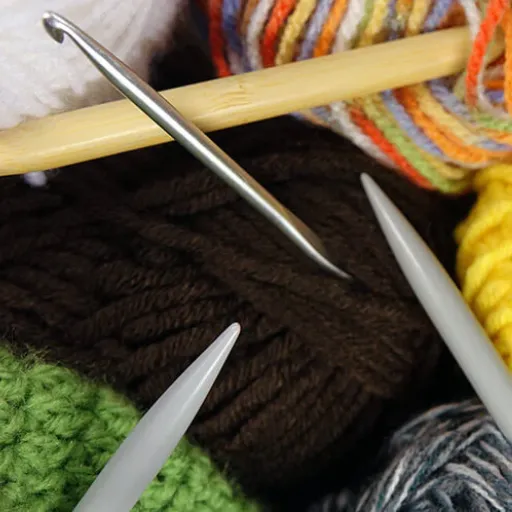
DIY Craft Ideas: Cozy Blankets and Scarves
Creating warm blankets and scarves with acrylic yarn is a wonderful craft for everyone, whether novice or expert. This yarn’s softness, durability, and availability in numerous shades and patterns make it perfect for these projects. Additionally, it’s economical and easy to maintain—machine washable without shrinking or losing color. These attributes keep finished pieces in excellent condition while giving you freedom to experiment with various patterns and designs.
🧶 Blanket Creation Guide:
- Choose Your Stitch Pattern: Select garter stitch or double crochet based on skill level
- Consider Modular Construction: Create small square patches to stitch together, easing the process
- Select Weight for Season: Lightweight throws for summer, thick chunky ones for winter
- Control Appearance and Use: Customize texture, warmth, and overall functionality
For scarves, acrylic yarn offers wide-ranging artistic expression. Choose classic single-tone designs or add life using stripes and multiple colors. Employ techniques like ribbing, cabling, or lacework to add texture and volume. Scarves particularly suit beginners, requiring less material and time while presenting fantastic opportunities to practice and develop skills. With acrylic yarn, you’ll enjoy producing soft, warm, fashionable accessories matching personal styles or serving as thoughtful handmade gifts.
Tips for Making Hats and Sweaters
The first step for hats and sweaters is purchasing quality, appropriate yarn. Choose yarn with warmth, softness, and elasticity characteristics. Wool blends are mainly chosen for durability and warmth, while lighter cotton or acrylic yarns suit less bulky garments. Read yarn labels carefully, as they indicate gauge which must match your pattern.
| Garment Type | Key Techniques | Important Considerations |
|---|---|---|
| Hats | Stretchy cast-on/bind-off, snug fit | Measure head circumference, adjust pattern |
| Sweaters | Careful seaming, professional finishing, blocking | Follow sizing charts, create gauge swatch |
Take measurements and fitting seriously. For hats, measure head circumference and adjust patterns to prevent overly tight or loose fits. For sweaters, refer to pattern sizing charts and potentially add or remove stitches for desired fit. Creating gauge swatches before starting projects is essential for guaranteeing consistent size and shape throughout.
Finally, use techniques ensuring neat, functional final pieces. For hats, employ stretchy methods allowing snug yet flexible fits. With sweaters, careful seaming and finishing create polished appearances—use blocking to smooth stitches and emphasize garment features. Following these guidelines, both new and experienced knitters can make practical, stylish hats and sweaters.
Frequently Asked Questions (FAQ)
Q: What is acrylic thread and what is it made of?
A: Acrylic thread is a synthetic material primarily composed of polymerized acrylonitrile, sometimes mixed with nylon or polyester to control strength and elasticity. It’s a popular choice over natural fibers like alpaca, cashmere, merino, and silk, offering lower prices, hypoallergenic properties for many users, and versatility for both crochet and knitting projects.
Q: How does acrylic thread compare to natural fibers like wool, alpaca, or cashmere?
A: Compared to natural fibers, acrylic thread is frequently considerably lower in price, machine-washable, and less susceptible to moth damage. However, it might not be as breathable and may not drape like silk or natural wool. While some crafters find certain acrylics challenging due to splitty texture, premium brands like Caron Simply Soft or Red Heart Super Saver provide smoother alternatives resembling higher-end fibers.
Q: Is acrylic thread suitable for crochet kits, beginner projects, or socks?
A: Certainly, acrylic crochet yarn and thread are perfect for beginner’s crochet kits as they’re easy to handle, machine-washable, and inexpensive. However, pure acrylic isn’t the best choice for socks compared to nylon blends or specific sock yarns, as acrylic may not provide the same elasticity or durability as sock yarn with reinforcement designed specifically for that purpose.
Q: How should I care for items made from acrylic thread?
A: Most acrylic yarns are machine-washable, making care easy: use gentle cycles and low heat or air dry to avoid heat damage. Some acrylic fibers require heat to set shape, but excessive heat can deform fabric and cause fiber breakdown. Use a fabric shaver or follow label instructions to maximize your clothing’s lifespan.
Q: Are there environmental or pollution concerns with using acrylic thread?
A: Yes. Acrylic is a synthetic microfiber that can contribute to microplastics pollution when washed, and it’s produced through petrochemical processes. Although recycling of acrylic remains limited compared to natural fibers, environmentally-conscious crafters often choose blends with recycled polyester or prioritize durability and recycling potential in project selection.
Q: Can acrylic thread be used for projects like wigs, hair extensions, or toys?
A: Acrylic fiber is common for wigs and hairpieces as it can be heat-treated and styled, though it’s highly flammable and behaves differently when heated. For children’s toys and amigurumi, acrylic is popular because it’s washable and hypoallergenic. However, safety guidelines for flame-resistance and toy manufacturing should always be followed.
Q: What tips help avoid common problems like pilling, shape loss, or difficult textures?
A: To prevent pilling and preserve shape, select anti-pilling or high-quality acrylics, wash on gentle cycles, and dry flat instead of using high heat. If yarn is scratchy or splitty, try changing needles or hooks, using premium acrylic blends with silk or nylon, and practicing tension adjustments. Making small gauge swatches helps test these solutions.
Q: Is acrylic thread safe in terms of chemicals and allergies?
A: Acrylic is generally hypoallergenic for many people as it contains no lanolin or animal residues. However, it’s made from acrylonitrile monomers and other chemicals, so extremely sensitive individuals should check labels. While acrylic doesn’t attract the same allergens as natural wool, some users may prefer the breathable properties of natural fibers like Merino or Cashmere despite higher costs.








